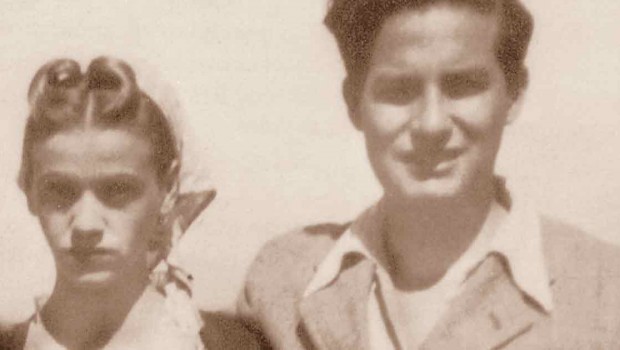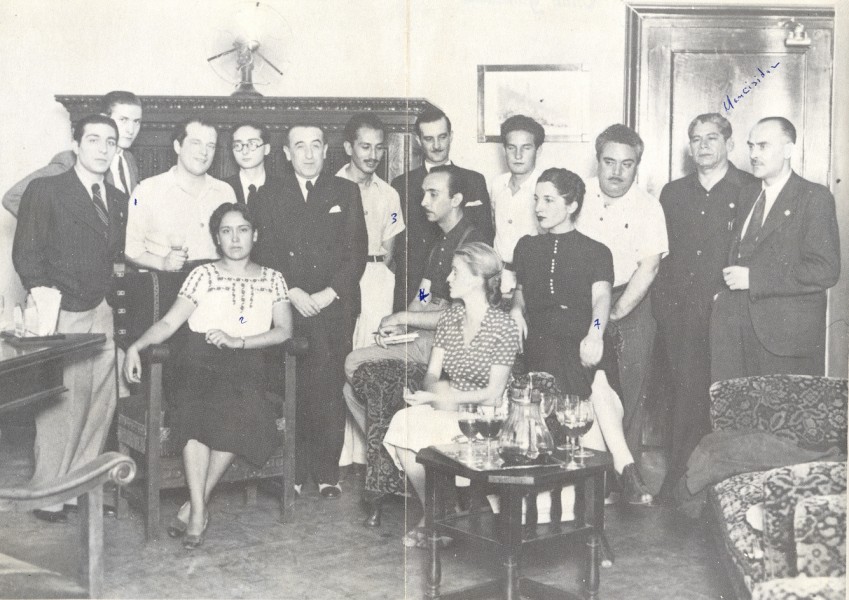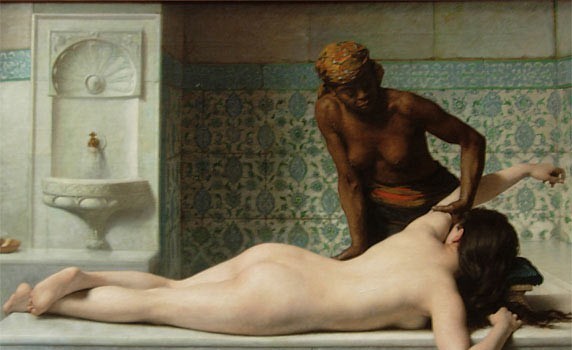Elena Garro, Octavio Paz, and the Battle for Cultural Memory. An Interview with Sandra Messinger Cypess
Tanya Huntington
TANYA HUNTINGTON: Those of us who are familiar with your career know that while you have devoted many pages to outstanding Latin American women writers, you are perhaps most well-known as the author of La Malinche in Mexican Literature: From history to myth. Was it La Malinche who first led you to delve into Elena Garro’s work?
SANDRA CYPESS: My interest in Garro in a way does begin with La Malinche, for it was her short story “La culpa es de los tlaxcaltecas” that first inspired me to write about the impact of La Malinche on Mexican culture. Reading Los recuerdos del porvenir and “La culpa es de los tlaxcaltecas” were transformative experiences for me, and I began to formulate my ideas about the Malinche paradigm in general, and Garro’s contributions in particular.
TH: Many of us consider Paz’s views on Mexican women in El laberinto to be seriously outdated. Which perhaps should come as no surprise, considering that the book was first published in 1950. Would you agree? How do you think Garro viewed his chapter on Los hijos de la Malinche?
SC: According to Paz, La Malinche represents “la atroz encarnación de la condición femenina”. In El laberinto la Malinche symbolizes the condition of women as sexual objects, and she is always “la otra,” a being with an inferior moral identity. This is not about criticizing Paz for having compiled ideas belonging to the patriarchy, but for having written them as he did, without commentary showing the other side, which helped maintain the idiosyncrasies that kept oppression against women and indigenous people in place. As I state in my book, it was up to Elena Garro to demonstrate this oppression and its effects.
TH: How did she accomplish this?
SC: I suggested that “La culpa es de los tlaxcaltecas” is a response to the macho ideals of El Laberinto: the protagonist Laura, if we associate her with the figure of La Malinche, does not voluntarily choose to give herself to the white man, to the conqueror, as it turns out. And if you recall the outcome of the story, Laura decides of her own accord, after careful consideration of the behavior of her white husband, Pedro, to go back to her first husband, who is Indian. When all is said and done, Laura does not strike us as a passive woman if we contrast her with Paz’s description, where the passivity of La Malinche is emphasized; moreover Laura, like Garro in real life, chose to empathize with indigenous people, not the avatars of Cortez.
TH: Were both Paz and Garro recognized for their reassessments of La Malinche?
SC: I discovered that Octavio Paz was always mentioned by everyone, and some critics even claimed (erroneously) that his work on La Malinche was extensive. I did not say anything about that point in 1991, but in this new book I do point out that Paz really only wrote two pages specifically dedicated to La Malinche, even though the chapter called “Los hijos de la Malinche” is over ten pages long in El Laberinto de la soledad. Although “La culpa es de los tlaxcaltecas” and Los recuerdos del porvenir do not mention La Malinche on the anecdotal level, in my reading of their subtexts I observed a response to the negative views of La Malinche synthesized by Paz in his essay. Garro, however, was never mentioned in relation to the figure of La Malinche before my book was published.
TH: And today?
SC: Now, I am pleased to say she is considered an important figure in the re-evaluation of that much maligned woman. Nevertheless, I discovered when talking with many colleagues across the humanities that while they knew of Octavio Paz and his great reputation as a poet, winner of the Nobel Prize, they had not heard of Elena Garro. In all of Paz’s work, some fourteen volumes published by Fondo de Cultura Economica, Garro’s name does not appear, and some of Paz’s North American critics never even knew that his first wife had distinguished herself as an outstanding writer in many genres. (I recently spoke at the Library of Congress, and the head of the Hispanic Division, an Argentine, confessed that she too, had not known much about Garro and had never read any of her works!)
TH: Has Garro, like La Malinche, been “much maligned”?
SC: Indeed, for much of the 20th century Garro was not acknowledged as an author of status in Latin America; she had received no international prizes, and her works were certainly not canonical within Latin American literary circles, nor were many translated into other languages, in contrast to the shelves of translations in of all of Paz’s work. Garro’s many novels, short stories, and plays were and continue to be an important guide for me in exploring ideas about gender, ethnicity and cultural memory. She offered an alternative vision of the official narrative of her national history and what it meant to be “Mexican.”
TH: Garro did have some defenders among her fellow authors, notably Bioy Casares. But there is a quote from an interview with Gabriela Mora in which she maintains that everything she writes, she writes against Paz: “estudié contra él, hablé contra él, tuve amantes contra él, escribí contra él y defendí a los indios contra él, escribí de política contra él, en fin todo, todo, todo lo que soy es contra él.” Was Octavio Paz her enemy, as the title of your new book Uncivil Wars would seem to suggest, and to what extent?
SC: In Mexico there have been some famous couples in the arts whose relationships were contentious, such as Frida Kahlo and Diego Rivera, or Antonieta Rivas Mercado and Jose Vasconcelos, but perhaps Elena Garro and Octavio Paz exemplify for me the most infamous of a relationship marked by “uncivil war”; especially from the perspective of Garro and her romans a clef, in which she writes about how difficult it is for many women to be in a relationship with a man who does not treat her as an equal. Many readers see her Testimonios sobre Margarita and Mi hermanita Magdalena as examples of what Garro believed their relationship to be like. From those texts one might come to the conclusion that Paz was her enemy. But on the other hand, I would like to suggest that once again, Garro has subverted the traditions of the patriarchy and in a sense, has made Paz her muse. She was inspired by him to write not just her life story, or not only about her life, but what it is like to live in a patriarchal society. In that way, he stimulated her writing!
TH: We are indeed drawn as critics to these “dynamic duos” and the works they generated in tandem, even when the relationships themselves were not necessarily harmonious. No doubt you explored many anecdotes involving Garro and Paz while researching Uncivil Wars, can you describe one that particularly stands out as being emblematic in your view?
SC: I see the contrast between Paz and Garro play itself out from the very beginning of their marriage, with their honeymoon in Spain during the Spanish Civil War. Paz was one of the first poets to respond to the news of the attack on the Spanish Republic with the publication of “¡No pasarán!” in 1936. For Garro, her major written response to the Spanish Civil war is found in her Memorias de España 1937, one of her only outright autobiographical texts. While Paz’s poems were immediate responses and were published during the war, Garro’s reflections were not published in book form until 1992. As she documents in the Memorias, she was treated as an inferior woman, always being told to keep quiet and not express her opinions to others. Marked by a witty and sarcastic tone, these memoirs contain many revealing anecdotes, and not just about Paz and Garro and their wartime experiences: since they were surrounded by many of the major writers of the day, Garro inevitably comments about them in a personal way.
TH: Does she discuss politics?
SC: Actually, the way Memorias begins is also an apparent contradiction of the ideas of Paz and his compatriots in Spain. Garro says, “Yo nunca había oído hablar de Karl Marx.” She follows her dismissal of Marx with further specific references that point to the Mexicans who formed part of her circle: the Contemporáneos. For her, “El grupo de los ‘Contemporáneos’ reinstaló la cultura en México después de la Revolución y de la sangrienta revolución cristera. Los Contemporáneos no eran políticos, sólo eran eruditos.” Here she was contradicting the ideology of the young radicals at the time, Paz included, who were communists and not esthetes in the manner of the Contemporáneos.
TH: Your book attempts to place Garro on equal footing, rather than have her continue to be referred to as merely a by-product of Paz’s early career. Do you see Garro as a wronged heroine, like those she portrayed in her writing? And if so, what can we do to right those wrongs?
SC: The fact that very few works by Garro have been translated into other languages means that she is not well known outside of the Hispanic literary world, and indeed, many Latin Americans outside of Mexico have not read her work. So I would have to agree that I do see her as a wronged heroine, as someone who deserves to be better known in the global literary community. Some of her supporters believe that she was prevented from publishing for many years because of Paz and not because of the lack of literary merit of her work.
TH: Did Garro defend herself by using her pen as her sword?
SC: I see Testimonios sobre Mariana or Mi hermanita Magdalena as a manipulation by Garro, a way to influence the reception of her previous relationship with Paz. In the battle of the sexes, we may say that Garro is using subterfuge a la Sor Juana, a stratagem to “get even” at the supposed poor treatment she first suffered at the hands of Paz. One must say, however, that if these novels–whether Testimonios or Mi hermanita Magdalena, as well as La casa junto al río or Inés, for example–were only valid as veiled autobiographies or mere diatribes in a divorce case, then we would have little consideration of their inclusion in the canon. More than a critique of Paz as a person, Garro is subverting not only the hegemonic view of selected cultural heroes of Mexico but also any support of the patriarchal system that prefers silent women, muses rather than writers.
• Uncivil Wars: Elena Garro, Octavio Paz, and the battle for cultural memory by Sandra Messinger Cypess, University of Texas Press, 2012.
 Tanya Huntington is a contributing writer at Literal. Follow her on Twitter at @TanyaHuntington.
Tanya Huntington is a contributing writer at Literal. Follow her on Twitter at @TanyaHuntington.
Posted: April 11, 2012 at 7:03 pm












The adequate” mom is a spiritual warrior, empowered by
love to develop, change, and trasform herself.